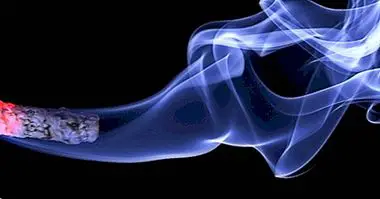This is the hallucinogenic honey of Himalayan bees
As much as currently drugs are associated with all kinds of synthetic substances created in laboratories, in reality they have existed for millennia, and some of them do not even have to go through "cooking" to have powerful effects on the human mind.
Hallucinogenic honey that is extracted from certain Himalayan honeycombs It is a clear example of this. In the following lines we will see how this psychoactive substance is and what effects it produces after its consumption.
- Related article: "Types of drugs: know their characteristics and effects"
What is hallucinogenic honey?
Hallucinogenic honey is a type of honey made by the giant bees of the Himalayas when they feed on the flowers of a species of rhododendron usual in the area. These flowers contain a type of toxic called grayatoxina whose effects on the activity of the human nervous system are significant if consumed in the appropriate way.
This substance is a redder color than usual in honey that is sold in any supermarket, and its taste is different.
The psychoactive effects that it produces, in addition, cause each year to venture in their search Some people who put their lives at risk to reach these hives , located on top of large stone walls in mountainous areas of Nepal. Normally, ladders of several tens of meters, made with bamboo, are used to reach them.
The people of the Kirat Kulung ethnic group tend to be in search of this substance in a habitual way, since it is part of the remedies that they have used for centuries to try to fight certain diseases.
Because of the difficulties in getting it and the high risk associated with reaching the honeycombs, Hallucinogenic honey is sold on the black market at a fairly high price , of more than 100 euros per kilo. In addition, the person who ventures to risk his life to expose himself to the danger of these precipices is assisted by many aides, who form teams of up to ten individuals.
However, several beekeepers from around the world, especially in Turkey and the United States of America, also produce a similar product taking advantage of contexts in which when the rhododendrons bloom the bees have few more food available, so the amount of grayatoxins which pass to the final product is high.
- Maybe you're interested: "Hallucinogenic mushrooms: these are their effects in our mind"
The effects of this substance
Grayatoxins, presented in high amounts of blood concentration, increase the amount of acetylcholine available in the human brain.
Acetylcholine, in turn, is an element used by neurons in the nervous system to communicate with each other, so that it is fully involved in physiological and psychological processes.
When an excess of acetylcholine floods the brain, a phenomenon known as cholinergic syndrome appears . The effects of intoxication by hallucinogenic honey are, in short, those that result from the union of hallucinations and the symptoms of this syndrome, which produces gastrointestinal problems, vomiting, lacrimation and urinary incontinence.
Normally, the effects of hallucinogenic honey appear between a quarter of an hour and an hour after being ingested, but both the intensity of the effects and the duration of these are very difficult to know in advance, since one of the particularities of this product is that it is sold without knowing exactly the concentration of grayatoxins it contains.
Of course, as the effects are not immediate but spend several minutes between ingested and appear , there is a danger of bingeing, not being aware that all the toxins ingested will have a very negative effect on health.
- Maybe you're interested: "Hallucinations: definition, causes, and symptoms"
Its traditional use
As in many other cultures, Nepalese villages regularly use home remedies whose efficacy has not been scientifically proven in clinical studies. In particular, they usually eat this food after purging, to fight cough and other symptoms of relatively common diseases .
Thus, the psychotropic effects of this honey are not the main reason why it is consumed in those villages where its use is traditional, although, possibly, they have contributed to giving it an image of food with unique and significantly different qualities. those of normal honey.
Lack of controls and lack of knowledge can make that this substance endangers the lives of patients , since it significantly alters the heart rate, causing it to go down a lot. If we add that it is used in people whose health is not well, the risk increases even more.



















